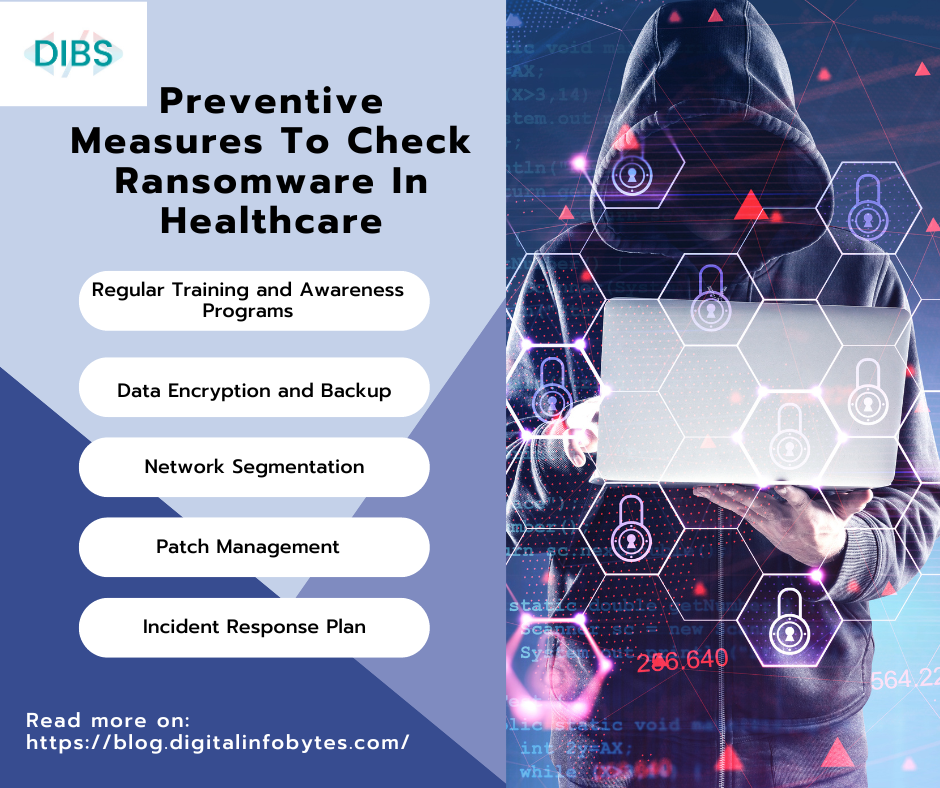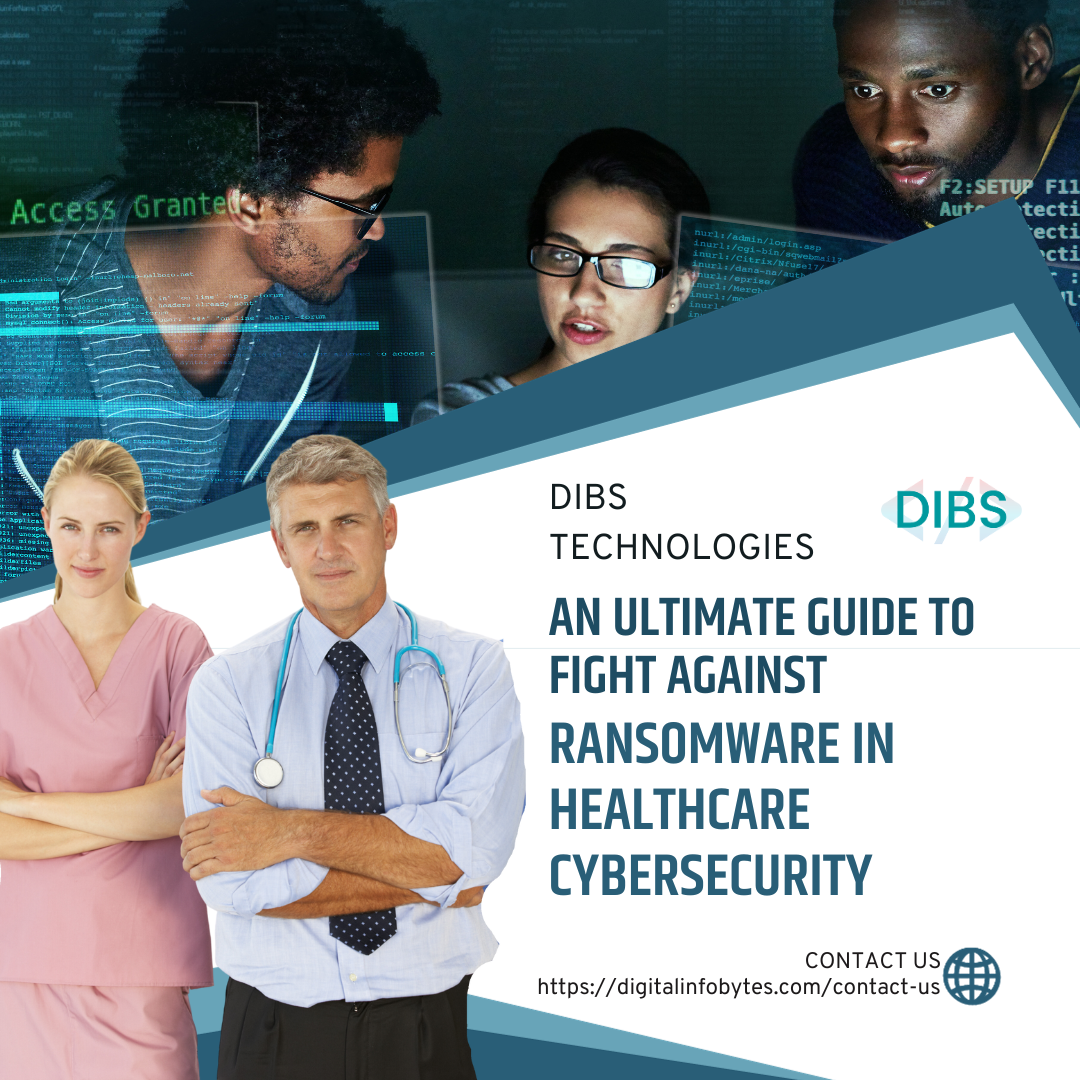The healthcare sector has revolutionized itself to a great extent through the use of technology. With the adoption of technology, the practices in the healthcare sector have been improved but it has also become vulnerable to threats. While digital health is making patient healthcare delivery easier, they have also paved the way for criminals to exploit the loophole in the cybersecurity of healthcare centers. One of the main threats that haunts the healthcare industry is ransomware. In this blog post, we will try to understand the danger of ransomware in healthcare cybersecurity, exploring its impact, preventive measures, and the need for a strong defense system.
Understanding Ransomware In Healthcare
Ransomware is the practice of installing malicious software that is designed to block access to a computer system or files until a sum of money is paid. It has become a prevalent weapon for cybercriminals. In healthcare, where data security is crucial, the payoff of a ransomware attack is not just financial but can be a matter of life and death. Ransomware leaves healthcare centers in a scenario where patient records are encrypted, and healthcare professionals are denied access to vital information. Lives are at stake, and the management needs to urgently find a solution to the problem at hand.
The High Stakes of Healthcare Data
Healthcare centers are a treasure house of sensitive information, from patient records to research data. The interconnected nature of electronic health records (EHRs) makes the healthcare system prone to ransomware attacks. These attacks not only disrupt daily operations but also compromise patient safety. The potential loss of data integrity raises ethical concerns, as patient privacy is at risk in cyber warfare.
Impact on Patient Care
Ransomware attacks in healthcare can have a direct impact on patient care. The compromise in the system unable medical professionals to access critical information. Data such as patient history, medications, and treatment plans are crucial for a healthcare professional and can disrupt the flow of care. It also puts the patient’s life at risk. In emergencies, delays caused by ransomware attacks can have dire consequences.
Financial Ramifications
Healthcare centers have to deal with the financial impacts of ransomware. They often find themselves in a difficult situation where they have to choose between losing such critical data or paying huge sums of ransom. Moreover, a breach in the security of the organization may lead to damage to its reputation. It can also lead to a loss of patient trust, resulting in long-term financial losses.
Preventive Measures To Check Ransomware In Healthcare
The best defense against ransomware in healthcare is a robust offense. Implementing preventive measures is crucial to reduce the risk of ransomware and other cyber attacks in healthcare organizations.
- Regular Training and Awareness Programs: Educating the healthcare staff about the risks of ransomware, phishing emails, and suspicious links is vital. Any mistake made by staff can be a significant factor in the success of these attacks. Thus, a well-informed workforce acts as the first line of defense.
- Data Encryption and Backup: Encrypting sensitive data ensures that even if it falls into the wrong hands, it remains unreadable. Along with data encryption, healthcare organizations must focus on backing up data regularly to reduce the impact of ransomware. Regular backups of critical information help to restore systems quickly in the event of an attack. These backups should be stored securely and regular testing is essential to ensure that they are reliable.
- Network Segmentation: Segmenting the network is important for any organization. By doing so, we limit the lateral movement of ransomware within the healthcare cyber system. If one segment gets compromised, it shouldn’t hamper the entire network. Thus, segmenting can prevent the rapid spread of the virus.
- Patch Management: Organizations must keep the system up to date with the latest security software. Ransomware often exploits weaknesses in the healthcare cyber system due to outdated software or the expiration of antivirus. Thus, regularly updating the system helps to maintain these security loopholes.
- Incident Response Plan: The risk involved in a ransomware attack makes it essential for the healthcare organization to keep a response plan ready. This plan should include steps to identify, eradicate, and recover from the attack. Management should apply the lessons learned from the previous incident while creating this plan.

The Imperative Need for Collaboration
Cyber threats, including ransomware, know no boundaries. The healthcare industry must come together to share information and best practices to control the risk of ransomware. Collaborative efforts between healthcare organizations, government agencies, and cybersecurity experts are significant. This will lead to the development of standardized protocols and tools that enhance the collective defense against ransomware.
Government Involvement and Regulations
The government should get involved in regulating cybersecurity in the healthcare industry. They shall enforce strict laws and standards for integrating technology in healthcare centers to manage ransomware and other threats. In the USA, initiatives such as the Health Insurance Portability and Accountability Act (HIPAA) ensure that healthcare organizations adhere to specific security measures. The measures are designed to protect both patient data and the overall integrity of the healthcare system.
Investing in Advanced Technologies
Healthcare centers must start their fight against ransomware from the very beginning. Healthcare providers must invest in advanced technologies such as artificial intelligence (AI) and machine learning (ML) to boost cybersecurity defenses. These technologies can detect potential threats in real time. With the help of this real-time detection management can act swiftly to minimize the impact of threats.
Conclusion
Medical organizations should not underestimate the threat of ransomware in healthcare cybersecurity. It’s a battle that demands continuous survey, collaboration, and innovation. As technology evolves, so do the tactics of cybercriminals. Healthcare organizations must stay one step ahead of these criminals. This can be done by implementing strong preventive measures, spreading cybersecurity awareness, and investing in the technologies that will safeguard not just data, but lives. In the evolving healthcare sector, cybersecurity defenses not just safeguard the health of our systems, but the well-being of those who depend on them.
Talk to our experts and learn more about the latest cybersecurity defenses in healthcare. You can find out how the DIBS team can help you build a robust defense system against ransomware and take all necessary preventive measures for ransomware.







Leave a Comment